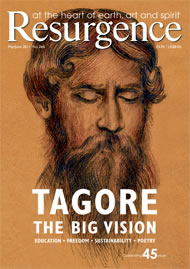I know of no other book that presents a better all-round picture of Einstein. Lavishly illustrated with contemporary photographs, it succeeds both in telling his biography and at the same time exploring his impact on the world, focusing first on his physics and later more on the man. At intervals additional chapters by specialists expound particular aspects of the story, almost all of them written very accessibly.
What drives the narrative is the double mystery of Einstein’s life. First there is the nature of his genius as a physicist. He created the main planks of the foundation on which all subsequent fundamental physics has been built: the two levels of relativity theory – the special and general theories – and the first form of quantum theory involving packets of energy, later called ‘quanta’.
Two of these achievements, moreover, appeared in 1905 at the start of his career, when he was an unknown official in a patents office. Astonishment turns into mystery, however, when one reads about the later period of his life, when “Einstein’s three decades of endless calculation after 1925 have left little behind except manuscripts”.
Second is the mystery of Einstein’s character and his relationships with his fellows. Here was no inaccessible recluse or lofty semi-autistic figure: Einstein comes over as a genial human being, welcoming all visitors and playing a major part, especially in his later years, in establishing organisations for promoting peace. Yet at times he could be almost brutally dismissive to those closest to him. Robert Schulmann, in his chapter Einstein’s Love Letters, remarks: “Albert’s devotion to science takes precedence over his emotional commitments. In the final analysis...Einstein cared more about humanity than about individual human beings.”
For me, a physicist, it is the first of these mysteries that is the most baffling, and the one on which this book sheds the greatest light. The pivotal moment when the inspiration of the first half of his life started shifting to the apparent sterility of the second part of his life was clearly his rejection of the course taken by quantum theory after 1927. In this year it was realised that ‘quanta’ were not the essential part of quantum theory, and a revised theory, called ‘quantum mechanics’, started to form.
An important part of this was ‘uncertainty relations’: the fact that it was not possible to measure certain pairs of quantities, such as the position and the momentum of an object, with complete accuracy. For example, the more accurately momentum was measured, the less accurately could one measure position.
A debate arose between Einstein, who held that objects always had both a position and a momentum, but it was mechanically impossible to get at both of them at the same time, and Niels Bohr, the leading architect of this new theory, who held that it was “wrong to think that the task of physics is to find out how Nature is. Physics concerns what we can say about Nature.”
The debate thus concerned the very meaning of existence. It was for this reason that Einstein’s thinking interested Tagore. The physicists of the time, however, opted for Bohr’s contrary view, though it was not until 1972, long after Einstein’s death, that an experiment by Friedman and Clauser confirmed that Bohr had been right.
Back in the 1930s, Einstein increasingly cut himself off from a physics that he felt had taken the wrong course. He was on a quest for an entirely different theory compatible with his vision of reality. His 1930 dialogue with Tagore in Germany (see page 22) took these issues to a new level, starting a debate that has continued to the present day.
This book left me with the impression of a man who was truly free. From childhood he pursued his own way, drawing on physical insights of astounding purity and penetration, which enabled him to revolutionise science. But though the individuality of these gifts let him down in his later work in physics, they continued to serve him in his work for peace, and it was this that was to make him so well known in later life.
In his work promoting peace and justice, Einstein’s fame protected him from the arbitrary obstacles and insults so often encountered in this task. For him sacrificial heroism was not required, but he unhesitatingly and cheerfully told the truth to president and floor cleaner alike. As for Einstein’s later science, Andrew Robinson reminds us in the words of Max Planck, the ‘grandfather’ of quantum theory, that perhaps “science cannot solve the ultimate mystery of Nature because in the last analysis we ourselves are part of the mystery we are trying to solve”.







